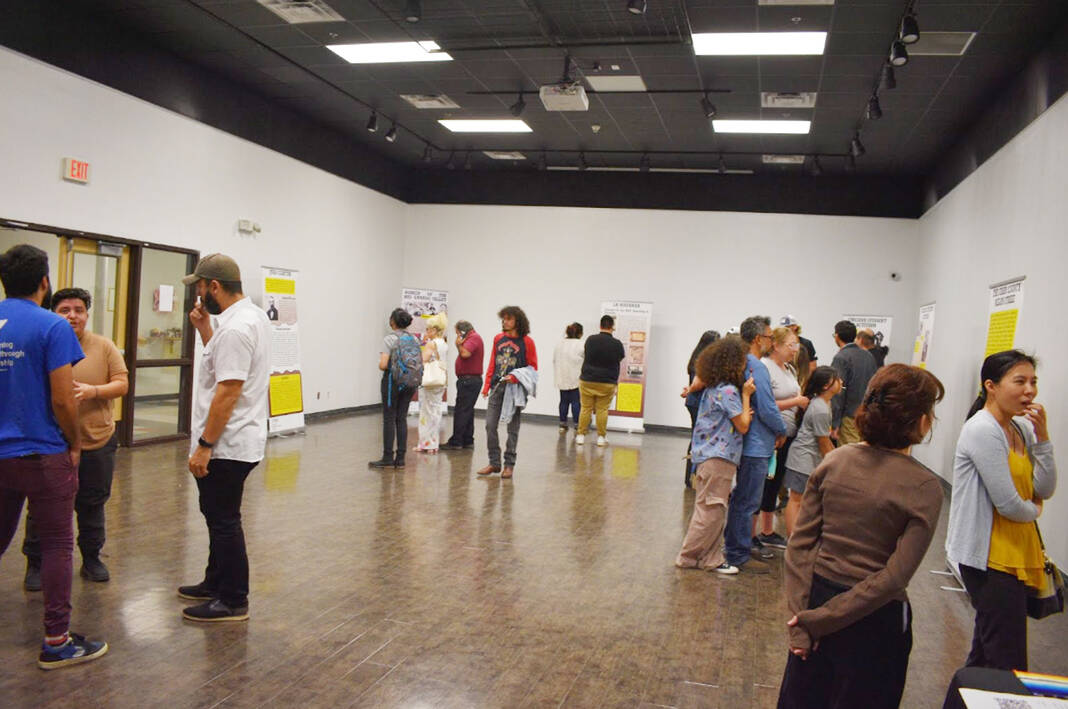|
Only have a minute? Listen instead
Getting your Trinity Audio player ready...
|

“Civil Rights in the Rio Grande Valley,” a traveling history museum, is hosting its second stop at the Landmark on Tower in Alamo from Thursday to Sunday with organizers encouraging community members to come learn history and have a conversation about it.
Organized by Nosotrxs Por El Valle, the traveling exhibit features historical events and influential figures in the Valley’s history in short digestible panels. The panels include information about the Pharr Riots of 1971, the Starr County Melon Strike and Women of the Valley.
One of the women mentioned in the panel is Gloria E. Anzaldúa, a queer Chicana poet, writer and feminist theorist. Born and raised in the RGV, Anzaldúa earned her bachelor’s degree the University of Texas Pan American and her masters degree from the University of Texas at Austin.
Anzaldúa’s works are based on the social and cultural marginalization she experienced growing up on the Texas-Mexican border in the Valley. She is best known for her book, “Borderlands/La Frontera: The New Mestiza.”
The opening reception was held on Sept. 18 at the University of Texas Rio Grande Valley Visual Art Building Gallery in Edinburg.
The second stop is at the Landmark on Tower located at 103 North Tower Road, which gives people an opportunity over the weekend to read about Valley civil rights history and enjoy multiple food trucks.
There will also be an opportunity for community feedback.
“We’re using this as an opportunity to ask for suggestions,” Taylor Seaver De La Fuente, a UTRGV Mexican-American graduate student and organization member, said. “ We want this to be the community telling us what they want to see.”
With each panel giving viewers a slice of history, the organization offers more information through a QR code in the exhibit. The extra information includes scholarly articles, news clips and even videos about the panel.
De La Fuente also emphasizes if people have a certain story about an event, through themselves or family members, to participate in their oral history interviews. With permission, the interview will be recorded and saved into their online archives for future viewers.
“We want to hear people’s stories,” she said. “By people coming to talk to us … we’re going to be able to grow our exhibit so much and our online archive will have all these community voices. So it would truly be an exhibit for the community by the community.”




